 |
 |
|||||||||||||||||||||
|
||||||||||||||||||||||
Wedge-rumped Storm-Petrel (Oceanodroma tethys), Patagonia Lake, Santa Cruz County
These Wedge-rumped Storm-Petrels were found by Chris McCreedy on 07 September 2016
and photographed by Chris McCreedy and Matt Brown on the
same date
Hurricane Newton formed roughly 220 mi southwest of Manzanillo, Colima, Mexico on 4 Sep 2016 and reached Arizona on 7 Sep 2016, bringing with it several notable species, including three species new to Arizona and one even new to the ABA area! This storm officially reached hurricane strength winds late on 5 Sep 2016 and reached peak intensity with wind speeds of 90 mph shortly before making landfall at Cabo San Lucas, Baja California Sur. Newton moved north and weakened over the Baja California Peninsula. The eyewall fell apart before it made a second landfall, after crossing the Gulf of California, near Bahia Kino, Sonora where it weakened to tropical storm status. Early afternoon on 7 Sep it crossed into Arizona in a weakened state. Despite the weakened state of the storm it managed to bring 5 species of “tubenoses” to Arizona, typically associated with stronger storms. Clearly we have a lot to learn about how hurricanes affect birds in our area! To see a track of the storm see here and to see windspeeds see here. For more information on the last tropical storm to bring tubenoses to Arizona, Nora, see here.
Multiple Wedge-rumped Storm-Petrels (15+) were
reported during and just after the hurricane. Four of
which were found at this location. This is
the first time this species has been recorded in Arizona
and there are ~12 records for offshore California, about
half of which were photographed. Due to difficulty
identifying this species from Townsend's Storm-Petrel it
is possible that some sight records from the 1970's and
80's may have been Townsend's. The species is uncommon
to fairly common off southern Baja California and in the
Gulf of California. These represent the first inland
records for the United States (though one slightly
inland in central California after a storm). There are
two subspecies (which may actually represent two
different species) with one population breeding in the
Galapagos and the other in Peru. It is not immeditely
clear which are represented here though. They differ in
size and extent of white rump. Several specimens have
been obtained from the storm
and they should be identifiable to subspecies.
Small dark
strom-petrel with a white rump. The extensive all white
rump, forked tail, and small size rules out other
similar species except for Townsend's Storm-Petrel, a
recent split from Leach's Storm-Petrel. Note especially
the extensive white rump patch which is wedge
shape and only slightly rounded where it meets the back,
the extensive white wrapping around onto the undertail
coverts, shallow forked tail, broad "hand" of the wing
giving it a more rounded look and the stout bill, large
feet, and pale
upper-wing bar that did not include the primary coverts
typical of the "Halocyptena"
storm-petrels (potential genus split including Least,
Black, and Wedge-rumped).
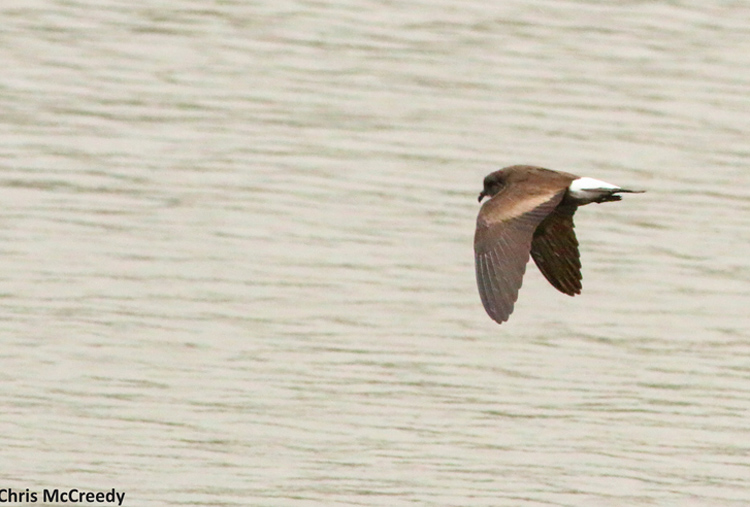
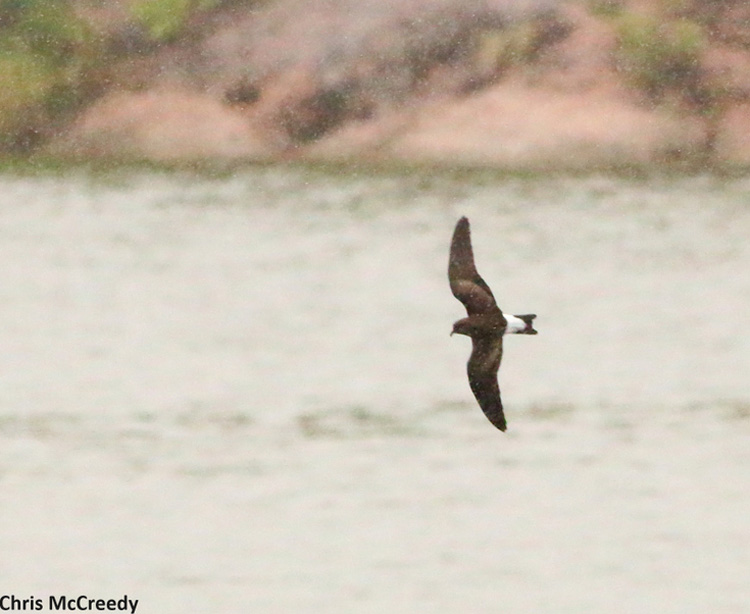
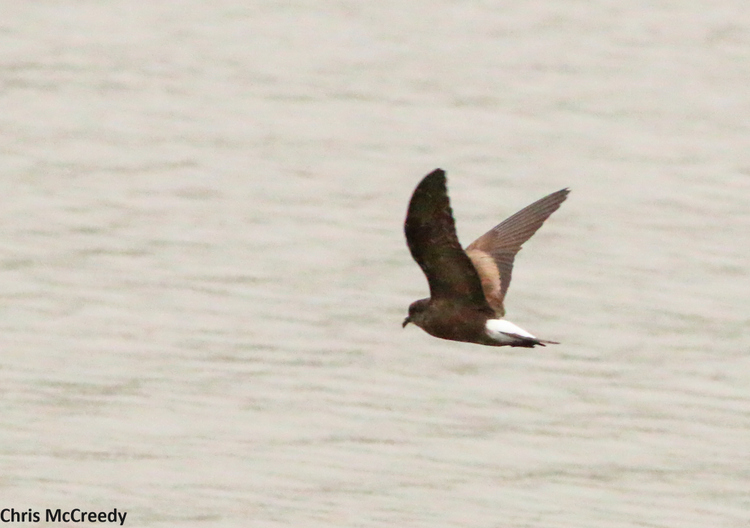
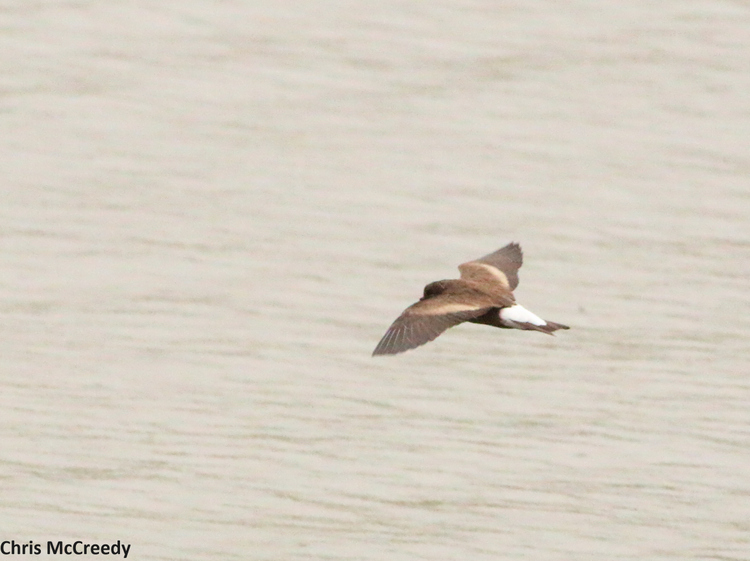
07 September 2016, photo by Chris McCreedy
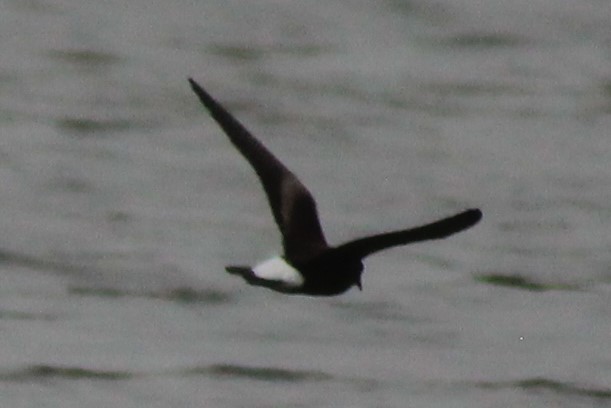
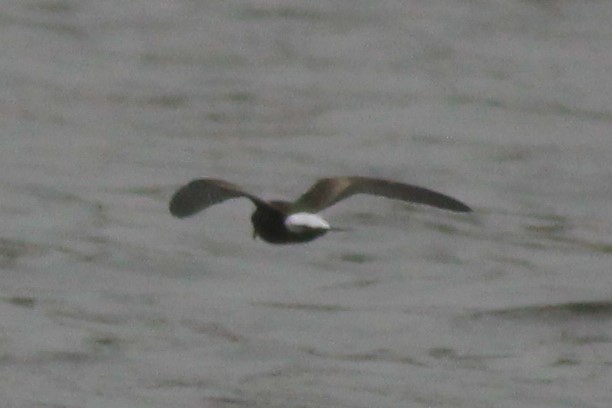
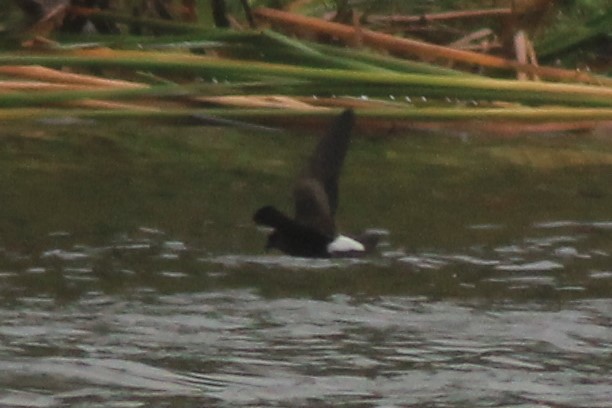
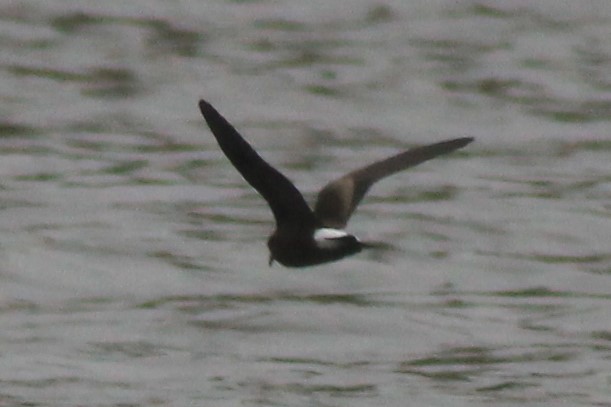
07 September 2016, photo by Matt Brown
All photos are copyrighted© by photographerSubmitted on 08 September 2016
|
©2005
|
HOME | | | REPORT SIGHTINGS | | | PHOTOS | | | BIRDING | | | JOURNAL | | | ABOUT US | | | CHECKLISTS | | | AZ BIRD COMMITTEE | | | EVENTS | | | LINKS |